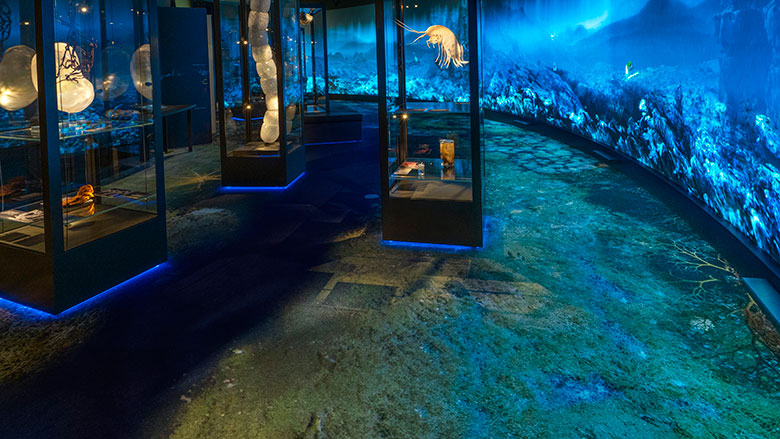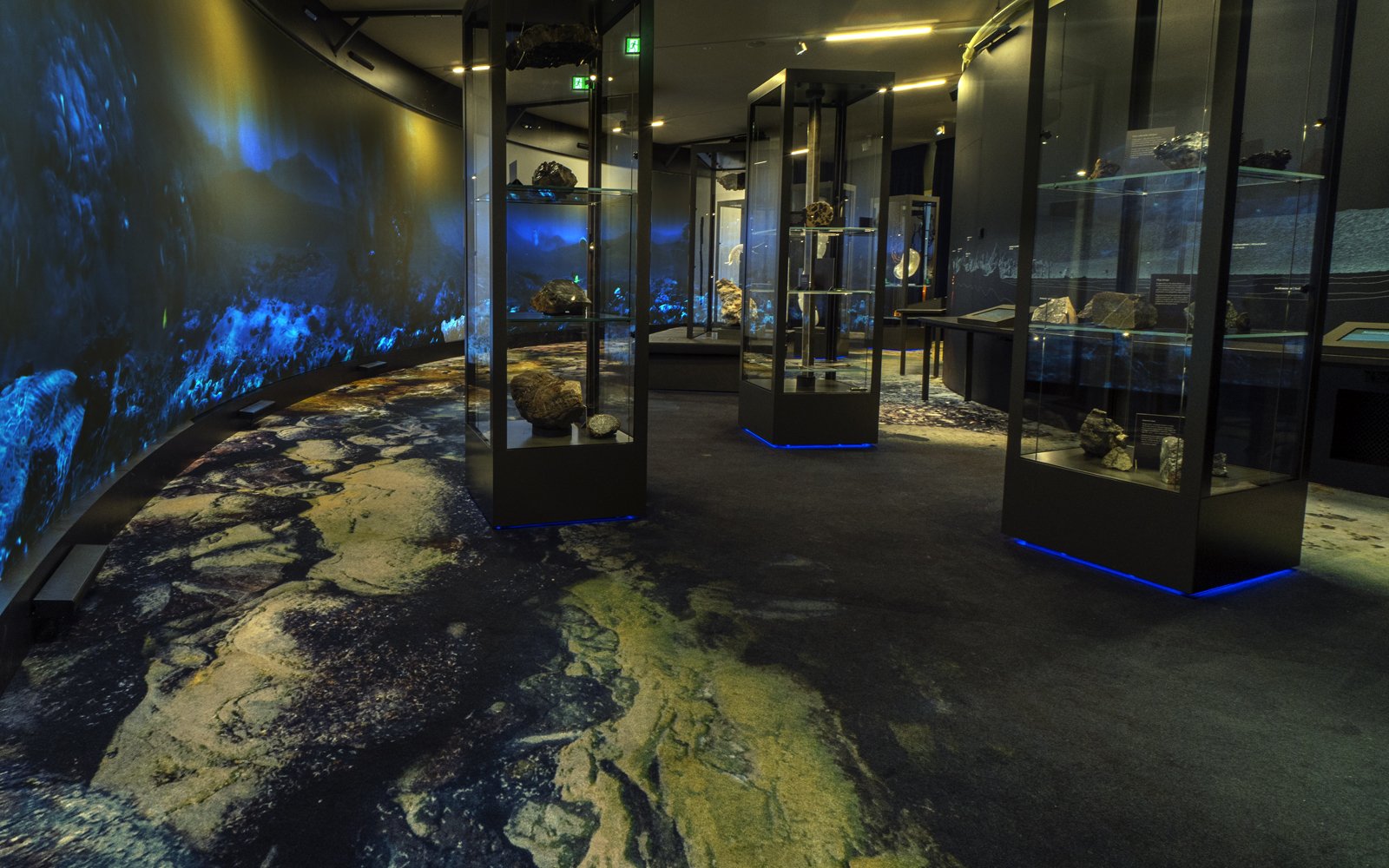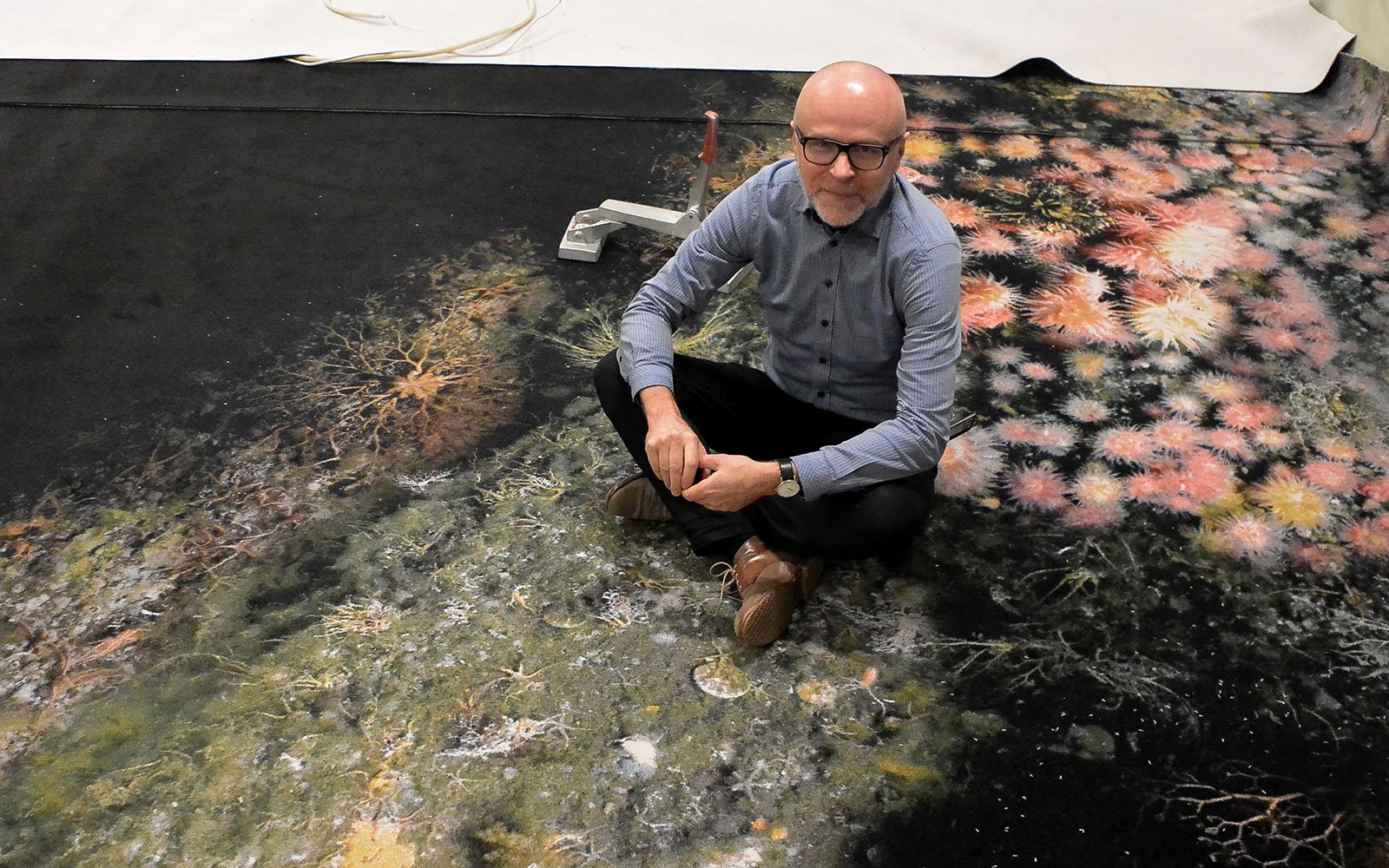
The University Museum of Bergen, Norway, curates material spanning anthropology, archaeology, botany, geology, zoology, art and culture. Embracing diverse historic and scientific themes, the exhibits are grouped into two overall departments; The Natural & Cultural History Collections and The Public Outreach & Exhibitions. Dating back to 1865, the museum is located in the oldest museum building in Norway.
During the recent renovation work, scientific and creative forces collaborated to create spectacular and educational visitor experiences. So, read on and learn how the team exploited custom design options when developing completely new expressions to amaze and entice the museum’s curious target group.
The renovation project started ten years ago, but the exhibition design was created over the last three years. Working as a Designer and Technician in the Department for Research and Science Communication at the University Museum of Bergen, Sølve Jozeph Westli explains: “Our challenge was to transform this old museum that was based on traditionally displayed collections and objects into a modern and interactive experience appealing to all the senses. We wanted the installations to allure the visitors while teaching them about evolution, biological diversity, human relationships with nature and academic research, among others.”
The exhibition design originates from the principles of a collaboration model, as expressed by the Venn diagram. Thus, each exhibition is developed in the very interference between science, design and didactics.

Sølve elaborates: “An interesting challenge was to translate our scientific knowledge into exhibitions that attract interest and curiosity from all visitor groups, such as the grandmother visiting the museum with her small grandchildren and everybody else aged in-between. Our aim is to reach the target group, The Curious Human, and in the first opening month after the renovation, we welcomed more than 40,000 expectant visitors, so we definitely think, we succeeded!”
In The Unknown Land exhibition, the design team strived to develop a distinctive feeling of going 2,500 metres below sea level. A soft carpet was preferred to create a slightly mysterious atmosphere in contrast to the wood and linoleum surfaces specified for some of the other floors in the museum. On finding the perfect carpet, Sølve clarifies: “We received a lot of samples from different carpet suppliers, but only a few could deliver the quality and imagery we wanted. And when visiting a nearby hotel with the same carpet type installed in the corridors, we finally knew that this was exactly what we had envisioned.”
When developing The Deep Sea carpet design for The Unknown Land exhibition, the team felt inspired by various material from the museum researchers, such as film and images showing this rather unknown territory on earth. Aiming to allow visitors to explore an underwater universe never seen this way before, the carpet and the 18 metre wide projection screen perfectly blend in an impressive optical illusion. The imagery on the carpet connects with an interactive volcano that erupts when visitors approach the screen. The carpet pattern originates from 60-70 high resolution images from the deep sea off the coast of Norway.

Sølve is particularly proud of this room and explains: “In The Deep Sea area, we have accomplished a true wow effect! Children lay down on the floor while looking up at the projection. Some parts of the carpet stand out with a three-dimensional look that makes the room come together and the carpet is just as important as the mineral samples from the deep sea and the interactive projection on the wall. In this room, all elements unite perfectly.”
In the geology exhibition, The Rise and Fall of a Mountain, geological processes such as plate tectonics are thematised. Adam Bartley, the designer of this installation, created the carpet design to mirror the spread of the ocean floor and the elements under the earths’ surface. The colours fit with other elements of this exhibit, such as the “lava” cushions, the steel and grey stones and not forgetting the custom designed lightning.

The third carpet design appears in the museum shop and in the World Views exhibition. Exhibition Designer, Lea Naglestad Sangolt, based this particular pattern on textile from the collections and applied it to a 30 metre long runner, creating a visual line that connects the different parts of the museum.
The Deep Sea and The Rise and Fall of a Mountain patterns were quite clear from the start, but designing the runner was a longer process. Sølve elaborates: “We started with a completely different idea based on old oriental carpets. In cooperation with artist Magnus Håland Sunde, we ended up with a design created from scanned images of traditional Norwegian textile patterns. After receiving a production sample from Ege Carpets that was quite wild and overwhelming, Lea reduced the colours from 15 to 4. The result is a much calmer and very graphic carpet that melts into the rest of the exhibition.”

In World Views, items from research and science history are on display. The room invites visitors to sit down while studying objects or enjoying a cup of coffee. In this area, the carpet helps to promote a relaxing ambience.
During the process, Sølve and his team collaborated closely with the local Ege Carpets sales office and were won over by the samples they received during the design process. Equally important, Ege Carpets were able to supply a complete description of all the materials used to produce the textile flooring, which is very important when bringing in carpets and other interior pieces to the museum, as toxins and the material compositions in general must be accurately clarified due to the fragility of the objects being exhibited.
We discussed the environmental issues and demands from our conservators who have a long list of materials, chemicals and binders that are not accepted in the museum. Luckily, it turned out that Ege Carpets could meet all of our requirements.
- Sølve Jozeph Westli, Designer and Technician at the University Museum of Bergen
Design inspiration delivered straight to you